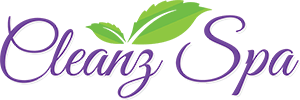Sagging jowls (loose, hanging skin around the jawline)? Obvious nasolabial folds? Deep wrinkles and creases—especially around the eyes? The truth is we are all likely to encounter these signs of aging. We may not all, however, react in the same way. Some people just live with them and move on. For others, living with reminders of aging such as these can negatively affect self-image, self-confidence, and mental health.
Book Now
![]()
That said, a facelift is an invasive surgery. Patients may go under general anesthesia, recovery time is necessary, and results are not likely permanent. The procedure may also come with a hefty price tag.
A PDO Thread Lift, however, is a viable non-surgical and minimally invasive alternative.
Thread lifts, as such procedures are commonly called, are a minimally invasive alternative to the facelift for patients who are not ready to undergo more aggressive treatment options. Although the effects from a thread lift are not as dramatic as a facelift (and are, sadly, only temporarily), improvement in the appearance of fine lines and wrinkles can be seen gradually, as the procedure stimulates natural collagen production.
PDO sutures are a special type of material used in thread lifts. PDO (which stands for polydioxanone) is an absorbable polymer that is flexible and durable. PDO thread lifts, sometimes referred to as PDS thread lifts, come in a variety of textures. According to aedit.com, there are three main textures of PDO suture: mono, cog, and screw threads.
“Mono threads are singular, smooth sutures that are anchored to the face that provide a small lift to the face. Cog threads have a barbed texture that provides better lift and increased collagen production. Screw threads have 1 to 2 intertwined threads that provide volume to the treated area. For patients who only desire skin tightening and rejuvenation, mono threads may be sufficient. Patients who desire more lifting and volume will better benefit from textured cog or screw threads,” aedit.com details.
“Before treatment, a patient’s skin is marked for insertion and direction of the inserted threads. Once marked, the insertion points will be completely anesthetized. Multiple threads can be inserted through the same point in the skin and attached to a long cannula. The cannula is pushed through the tissue beneath the skin,” the website continues. “When the thread has reached its predetermined endpoint, it is released, and the cannula removed. This process is repeated until the desired lift has been achieved, with as many 1 to 15 threads inserted, depending on the treatment area and concern being addressed. Any extra thread is trimmed. The threads are massaged to ensure the tissue is smooth and no dimpling is present. Recovery is minimal after a PDO thread lift procedure. Most patients resume normal activity within one-week post-procedure.”
A PDO thread lift aims to reposition tissue to rejuvenate and restore youthful proportions and appearances to the face. At Cleanz, this procedure can be done safely and professionally. It can address individual concerns (such as crow’s feet or a “browlift”), more full-face type of procedures such as PDO jawline or lower face procedures, and even breast, butt, and cellulite lifts.
